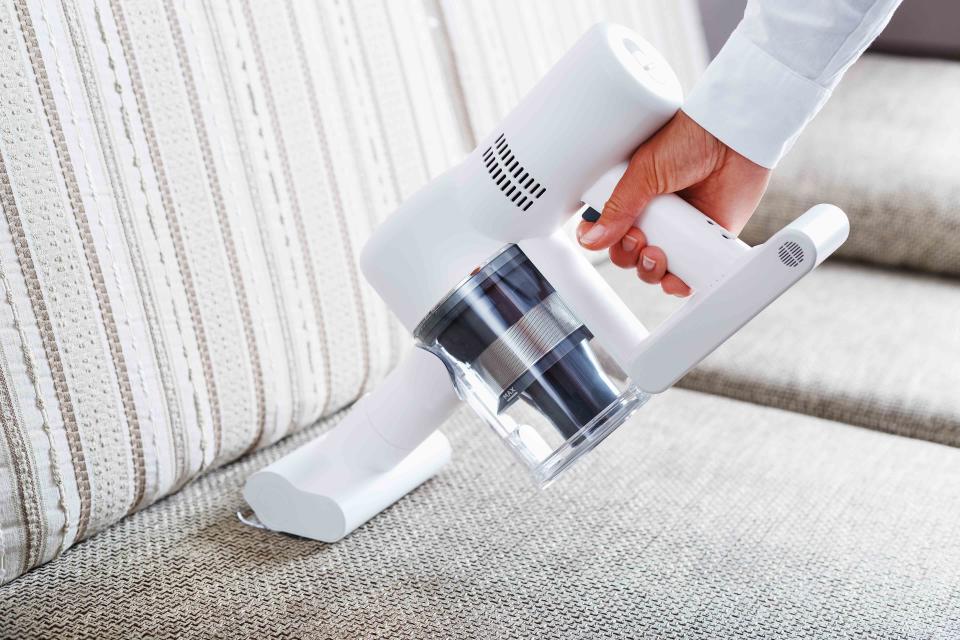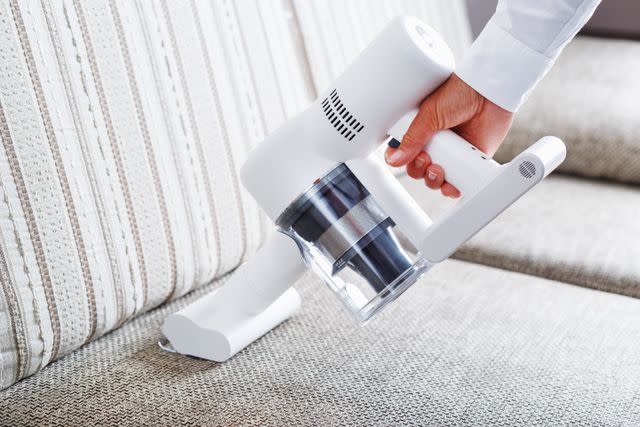How Long Do Vacuums Last? 4 Signs It’s Time for a Replacement
Unsure when it's time for a new vacuum? Here are a few ways to know when it’s time to replace that handy cleaning device.

Getty Images / Aleksandr Grechanyuk
Vacuum cleaners are reliable, versatile cleaning tools that can last for many years. However, just like all appliances, eventually, there comes a time when a vacuum wears down and doesn’t clean as effectively. Every model is different, but there are some telltale signs when a vacuum cleaner has reached the end of its life span. Here are four signs that indicate it’s time to replace your vacuum cleaner.
How Long Do Vacuums Last?
According to a Consumer Reports survey, vacuum cleaners can last for a median of 8 years. But it isn’t an exact science. How long a vacuum lasts depends widely on the model and how you use your vacuum. Walter E. Bennett, a handyman with Green Leaf Air, says a well-maintained vacuum can last users anywhere from 8 to 12 years.

Getty Images / Aleksandr Grechanyuk
There are various factors that impact a vacuum cleaner’s life span. Bennett says the brand, model, maintenance, and frequency of use all affect how long a vacuum will last. If you have a large area that gets dirty easily or any pets or kids making messes, your vacuum likely has to work harder and more frequently, so it may wear out sooner. On the other hand, a studio apartment that doesn’t attract dust and dirt as easily may see a vacuum cleaner last longer. Proper care, maintenance, and regular cleaning will prolong a vacuum cleaner’s life and ensure its optimal performance, Bennett says.
Related: The 8 Best Vacuums of 2023, According To Our Testing
4 Signs a Vacuum Cleaner Should Be Replaced
There are many hints a vacuum cleaner should be replaced. But before ditching a perfectly good vacuum, always check to see if the problem can be fixed by a simple repair or part replacement. If replacing a vacuum becomes more cost-effective than repairs, it might be time to toss the old duster and purchase a new one. Here are four signs indicating it’s time to toss it.
1. The vacuum doesn’t work as well as it used to.
If the vacuum just doesn’t perform like it used to, this is a simple sign it’s time to replace it. Skylar Christensen, a sales manager at Beehive Plumbing, says if the machine doesn’t work properly or is taking too long to start, the vacuum may need replacing. Bennett also says that if a vacuum sees a significant decrease in suction power, it could be a sign the motor or other internal components are worn out.
2. The vacuum gets clogged easily.
It’s perfectly normal for vacuums to get clogged. But if you find the machine is getting clogged more frequently and after smaller cleaning jobs, it could be a sign of a faulty filter or brush. Christensen says if debris is left in the filters, it can hinder the vacuum’s performance and cause irreversible damage to the machine. While these parts may be replaceable in the interim, if the problem persists, it may be easier to purchase a new vacuum than to continually replace parts of an old one.
3. The vacuum emits strange noises or smells.
Most vacuums produce a quiet humming sound. But if yours starts making excessively loud noises or emitting burning smells, it is time to replace it. Unusual noises, grinding sounds, or unpleasant odors are a sign of mechanical issues, according to Bennett. Smoky or stinky smells are not only a fire hazard, but they can also cause allergic reactions. Don’t take a chance on a repair. Just replace your vacuum with a newer, more reliable one.
4. The vacuum is outdated.
Older vacuums that have seen their fair share of cleaning may outgrow your cleaning needs. Because new technology is always being developed, older vacuums can be less efficient by comparison. Also, as time goes on, Bennett says that essential parts like brush rolls, belts, hoses, or attachments may become worn out, broken, or discontinued by the manufacturer. “If you find that your vacuum is outdated or no longer meets your cleaning needs effectively,” Bennett says, “it might be time to upgrade to a more modern and efficient model.”
Consider Your Lifestyle When Replacing a Vacuum
With proper maintenance, vacuums can last a long time. Christensen notes that simple habits like regularly changing the filters can help the machine run smoothly for a longer period of time and extend the vacuum’s life expectancy by a few years. However, even with the proper care, you may find the need to replace an old vacuum with one that can accommodate lifestyle changes and evolving efficient technology.
If a vacuum is not efficiently removing dirt, dust, and debris from floors and surfaces, it is time to replace it. An excessive buildup of dust and dirt can impact your family’s health as well as the general aesthetic of a home. A simple updated replacement can save you time, money, and hassle in the long run.
You may also need to replace a vacuum if your cleaning needs change. Moving to a larger space and acquiring pets is a common turning point. Also, having kids or needing to maintain a car, outdoor shed, or other external structure may require a new vacuum with specific mobility or cleaning capabilities.
Robot vacuums, for example, can now clean your home and dump their filter container—all while no one is in the house. While older vacuums may have more suction power, they require human intervention and time, which may be running low. These days, lifestyle needs—rather than appliance malfunctions—may determine replacement timing.
For more Better Homes & Gardens news, make sure to sign up for our newsletter!
Read the original article on Better Homes & Gardens.

